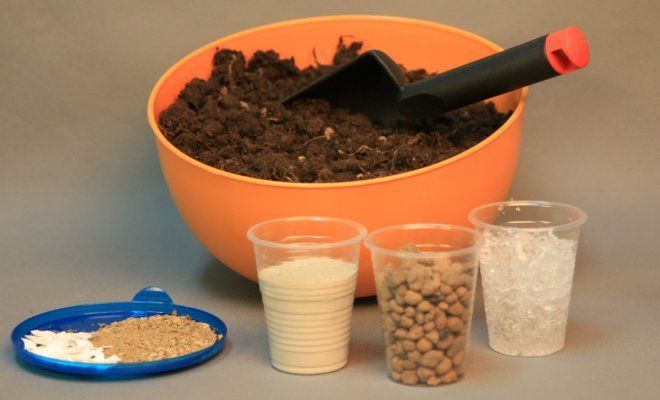 Pepper belongs to the category of nightshade crops, which leads to special tenderness and sensitivity of the root systems of plants. It is because of this that growing fruits requires not only the correct irrigation regime and timely soil fertilization, but also the corresponding composition of the soils used.
Pepper belongs to the category of nightshade crops, which leads to special tenderness and sensitivity of the root systems of plants. It is because of this that growing fruits requires not only the correct irrigation regime and timely soil fertilization, but also the corresponding composition of the soils used.
Content
General requirements
More than half the success in growing healthy and stronger seedlings depends on the correctness of the soil selected for the seeds. Among the main soil requirements for growing pepper seedlings, it is worth highlighting:
- lightness, friability and porosity, providing the supply of root systems with oxygen;
- the ability of the soil to pass moisture without the formation of crusts on the surface;
- the presence of organic fertilizers in the soil (bird droppings, mullein, compost);
- from chemicals, the soil should be rich in phosphorus, nitrogen, iron and potassium;
- the optimum level of soil acidity is from 5 to 7 pH (increased acidity is a favorable environment for the propagation of fungi and bacteria, the spread of infectious diseases).
There are a number of contraindications for which the soil cannot be used to grow pepper seedlings. This applies to the presence of clay in the soil, as well as soil contamination with various larvae, fungi and microbes that cause diseases and subsequent death of plants. Soil from peat substrate is not suitable for use.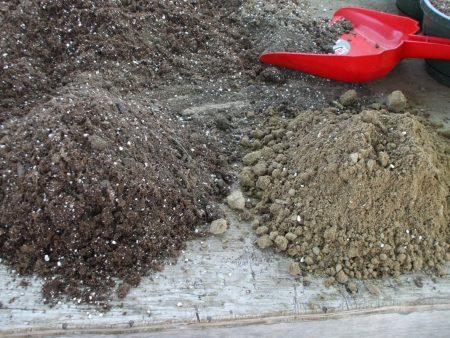
Seedlings
An important requirement in the independent preparation of the soil mixture relates to the fact that all components must be processed in the fall. As a rule, individual components are placed in buckets, bags or bags and left to freeze over the entire winter period. In the practice of experienced gardeners, there are five proven recipes for preparing seedlings for peppers:
- Humus, sand, peat and earth in equal proportions.
- Humus with lowland peat and the addition of superphosphates.
- Sand, turf, humus and earth in equal amounts with the addition of 1 cup of wood ash for every 10 kg of the mixture.
- Sand and peat in one part with the addition of two parts of turf.
- Leafy earth, turf and humus in equal parts.
In all of the above options, sand can be replaced with a baking powder. In work on the soil, it is better to abandon the use of untreated turf or fresh compost. They can cause the rapid growth of bacteria and the spread of infections that affect seedlings.
Preparation of land for seedlings of peppers
Suitable time for sowing pepper seeds is the end of February - the beginning of March. Soil preparation should begin 7 to 10 days before the planned work. Initially, the components are thawed and decontaminated. If there are no special problems with defrosting, then the process of soil disinfection can be carried out in several ways:
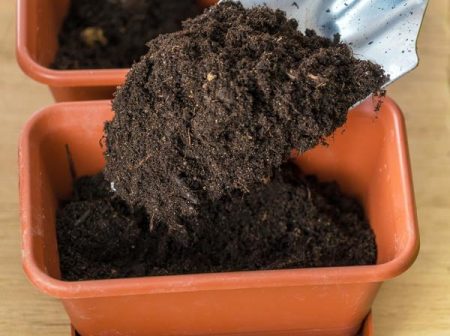
- Soil treatment with fungicidal and insecticidal preparations. The option is suitable only in cases where there are real doubts about the quality of the land, for example, the soil is taken from the forest. At the same time, all requirements for the dosage of the drug are necessarily observed and personal protective equipment is used.
- Steaming This option is more suitable because it is less dangerous. The process itself lasts from 30 minutes to several hours. After the work, the soils should be stored in clean, hermetically sealed containers or bags.
- Warming in the oven at a temperature of 50 degrees. With this cultivation of the land, it is not recommended to use higher temperatures, since along with bacteria and fungi beneficial microorganisms will begin to break down.
- Processing light pink solution of potassium permanganate. This can be watering, either with ordinary warm solution or with a boiling agent. In the latter case, the entire tank is additionally covered for better soil steaming.
After such treatments, the use of fertilizers is mandatory, but moderate. Excessively oversaturated soil with compost and mineral complexes can provoke a disease, and then the death of seedlings.
As for the list of components for a suitable soil, it is thought out and as balanced as possible. In addition, each of the elements involved performs its own tasks directly.
Humus
The opinion that humus and compost are one and the same is erroneous. If humus is the result of rotted manure and can be used no earlier than two years after laying, then compost is a complex of various organic residues with the addition of phosphorite flour, peat and garden soil.
The optimal period for preparing humus for further use lasts from 2 to 5 years. At the same time, the substance itself completely stops smelling of manure, its aroma rather resembles the smell of spring earth or forest litter. In terms of effectiveness, it is the overripe humus that is the best fertilizer for soils, which will later be used for growing seedlings.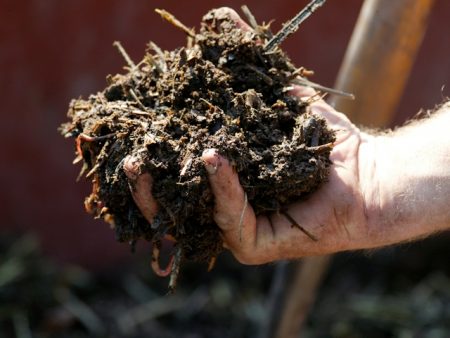
Baking powder
This material is used to increase soil porosity. As a baking powder can be used coarse river sand or sawdust, which make the soil easier and provide the root system of seedlings with the necessary oxygen.
As a baking powder for soil, you can also use:
- perlite, which significantly reduces the risk of fungal infections and plant infection;
- sphangum that protects the root system of pepper bushes from rot damage;
- vermiculite that retains moisture and does not allow its complete drying out in the absence of watering.
It is river sand with large grains that best copes with the task of loosening the soil.
Peat
The usefulness of peat lies in the ability of the soil to pass more oxygen to the roots of plants, and is also a useful substance, saturating the soil with nitrogen. At the same time, there are three types of peat, but not each of them is suitable for working with the cultivation of pepper.
If there is access to the lowland (the most nutritious), transitional and surface (the most acidic) types of peat, then the choice must be made in favor of the first two. If only the surface type of peat is available for work, then it must first be treated with wood sifted ash or lime, which normalizes the degree of acidity.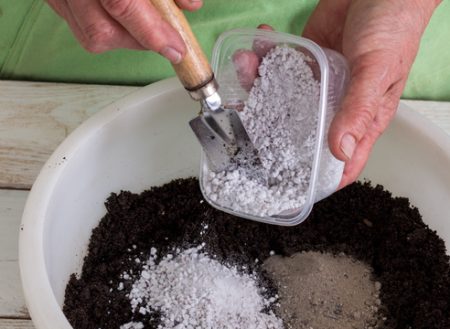
Sheet earth
We are talking about the composition of the soil, which is formed under the trees and includes rotted fallen leaves. This version of the soil is distinguished by many useful substances, which is why they are called leaf humus.
You can get such land by going to the deciduous forest, or you can cook it yourself. In the second case, it is necessary to collect the fallen leaves and stack them in a heap with layers of ordinary garden soil. The resulting mixture is subject to periodic watering. To speed up the process, urea, manure or lime can be added to the mixture. To use such land for growing pepper seedlings is possible only after the complete decay of the foliage, after 1.5 - 2 years.
Turf
Topsoil is usually called the topsoil and it is of three types:
- heavy if it contains clay;
- medium, if besides clay there is still sand;
- light if the main component is sand.
When working with pepper seedlings, you can use a medium or light type of turf. Its collection must be carried out in advance, in the summer or in the fall. In this case, you need to collect the top layer of soil along with grass, as if cutting it off. Wooden crates are best suited for winter storage of turf.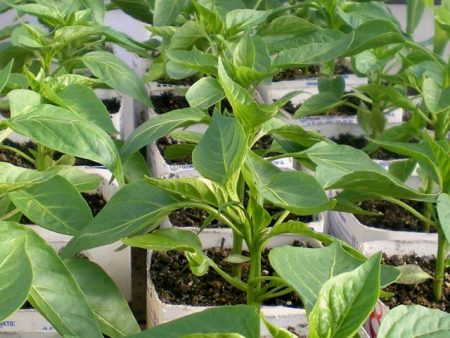
Is it possible to add soil to seedlings of peppers
As a rule, growing pepper seedlings does not require the need to supplement the container with earth and sprinkle it on the basal part of the stem. But when such a need arises, it is necessary to do everything as carefully as possible, without affecting or falling asleep the first leaves on the shoots. The procedure can be carried out in several stages, but it should be stopped as soon as the strengthening of the lower part of the stem (its lignification) begins, since the development of the root system can slow down, which in turn will cause the entire bush to rot.
Reviews
Valentina Vasilievna, 49 years old
The use of fungicides for cultivating the land is quite dangerous and poisonous. It is necessary to carry out such a procedure at least 1.5 - 2 weeks before sowing seeds. More gentle is the steaming of the soil with a boiling potassium permanganate solution. As an additional treatment, you can use a soda solution of 100 g per 4 - 5 liters of water.




 Calorie pepper stuffed with meat and rice - BZHU per 100 grams
Calorie pepper stuffed with meat and rice - BZHU per 100 grams Gorky pepper - the best varieties for open ground
Gorky pepper - the best varieties for open ground Hot pepper seeds - the best varieties for open ground and reviews
Hot pepper seeds - the best varieties for open ground and reviews Capsicum tincture for hair - how to use and reviews
Capsicum tincture for hair - how to use and reviews